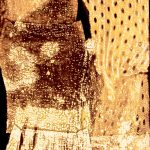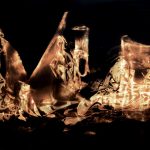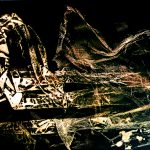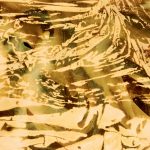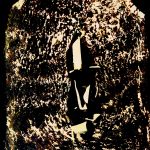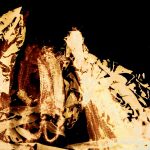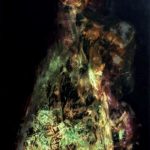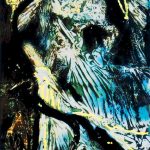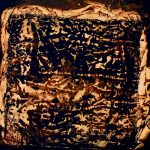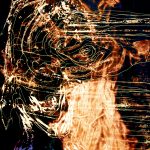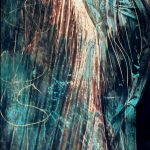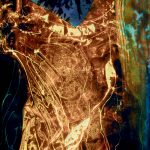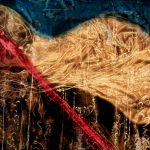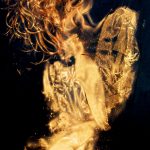Light phenomenology
by Carolina Lio, Padova 2012Related series:
Grazia Azzali’s artistic research is halfway between painting and photography, but in a totally new way compared to the genre mixes we have already been used to seeing. When we talk about the coexistence of painting and photography, the first thing we think of is, in fact, a photographic print that is covered more or less predominantly by painting, but where each of the two media has its own life, its own moment of action and its own identity. Grazia Azzali, instead, confuses the two things in a single gesture, not actually using either photography or painting properly understood.
The operation is pictorial, there is the gesture and movement of the impression of colour on the canvas, but the medium is a photographic instrument. Ultimately, the support on which the action is performed is the emulsion, the photosensitive gelatinous solution that is deposited on the film. On it the light is dosed and deposited as if it were an oil colour, creating a gold-tone composition on a blind background.
The final result has of photography the scientific component of the use of chemistry, and of painting the manual gesture of impressing a surface on another surface to create an image that before was only mental. And in fact, although at first glance the result seems like an abstraction, a pure game of golden spinning on a very black background, at due distance from the work the figures recompose intricate, distorted, visceral, but recognizable subjects. They are fairies, boats, seascapes, visions of the firmament, nocturnal vegetations and other elements that together contribute to recreate a fantastic and almost epic cosmogony.
It is a world of fairy tales that lives in a perpetually nocturnal dimension, which intersects with magic, with the corpus of the most ancient legends and myths, with alchemy and esotericism, imbued with mystery and at the same time with revelations, with discoveries that bring light where there was darkness in the form of a message that turns out to be a whole and complex dimension of meaning and beauty.
The chemical process made of photographic emulsion gives two clear advantages over any other means. The first is the exclusivity of a technique that Grazia Azzali uses for the first time and with a mastery that comes from twenty years of experimentation. The second is this marriage between darkness and light in absolute, as no pictorial colour or photograph from reality would ever be able to recreate. From the total darkness emerges a source of light that, moving quickly, recreates a drawing as it passes and that above all resists fixed and does not dissolve, does not fade and, on the contrary, becomes more and more clear is significant.
The fact that all this happens on a chemical level makes the work not a representation of reality, but a real phenomenon in itself, something that is neither a reproduction of nature nor an imitation, but a real new nature.
And if this cosmogony with its gothic and epic traits succeeds so well, it is obvious that it is not only because of a capacity for “knowing how to do”, but also because it is part of a highly developed and clear spirituality that the artist cultivates in his character, with his personality effectively nocturnal, shy, solitary, searching for mystery and passionate about new ways of understanding life beyond the material, constantly mixing his daily life with the new spiritual and esoteric sciences. But to make unique the type of operation and also what could be defined as her visual defect and that in this case she is an indispensable support.
Her pupil sees the sources of light doubled and thanks to this she focuses better in the dark and has a different vision than ours on the sources of light, accentuating the magical vision that her works form and creating an imaginary where a different kind of conception of the use of light and darkness is evident compared to anyone else.
Brightness is dosed with an above-average touch and the artist’s greater sensitivity to this type of energy and material makes it even stronger than it already is, giving it the possibility to create a texture and a fabric of itself.
Talking about the almost unique sensation that her particular sight allows her to have and the relationship that this develops with her work, the artist has devised an almost motto: “The work is my frequency”, inspired by what her master, Emilio Vedova, often repeated: “The work is my breath”. The term used by Grazia Azzali is, however, even more significant as it manages to go beyond a poetic reference and becomes a physical phenomenon in the scientific sense of the term: light is an electromagnetic wave and as such is identified with a frequency. So the final work is in fact its light, its way of filtering and conceiving it, a way of searching for meaning in the world, looking for an illumination that unravels the darkness of human knowledge.
Related works:

